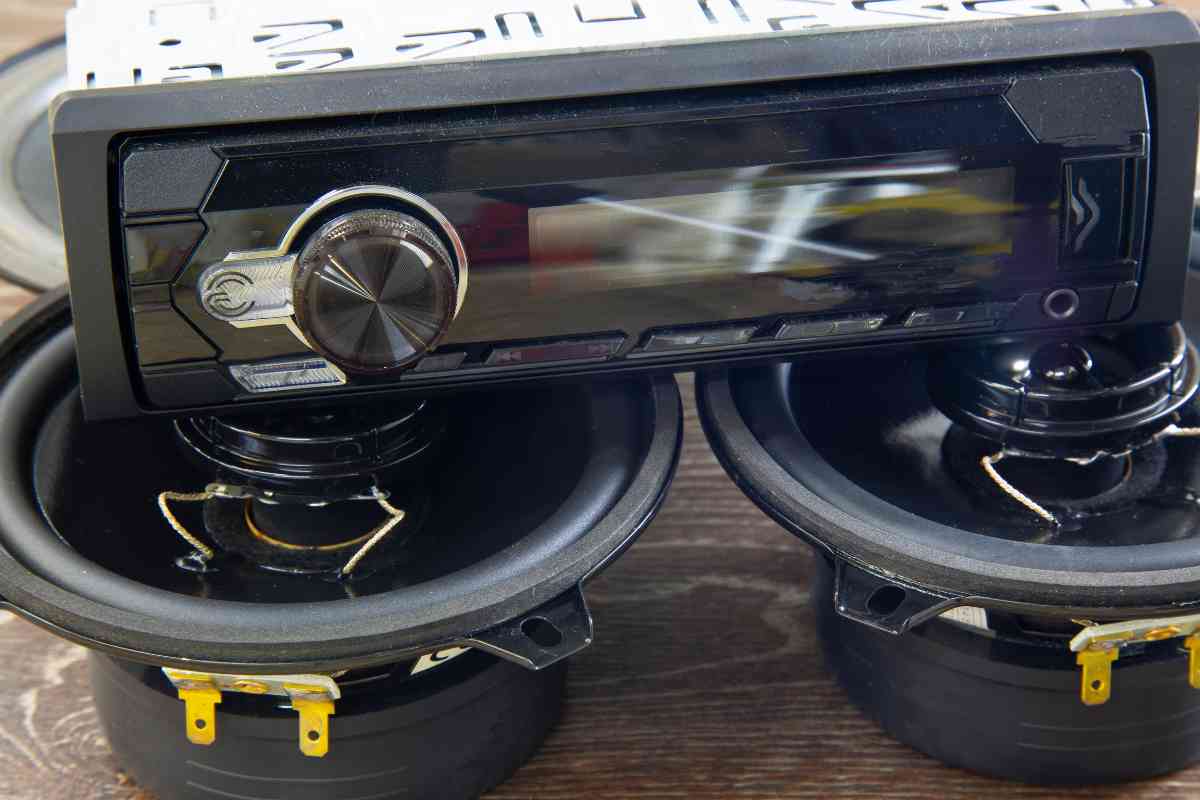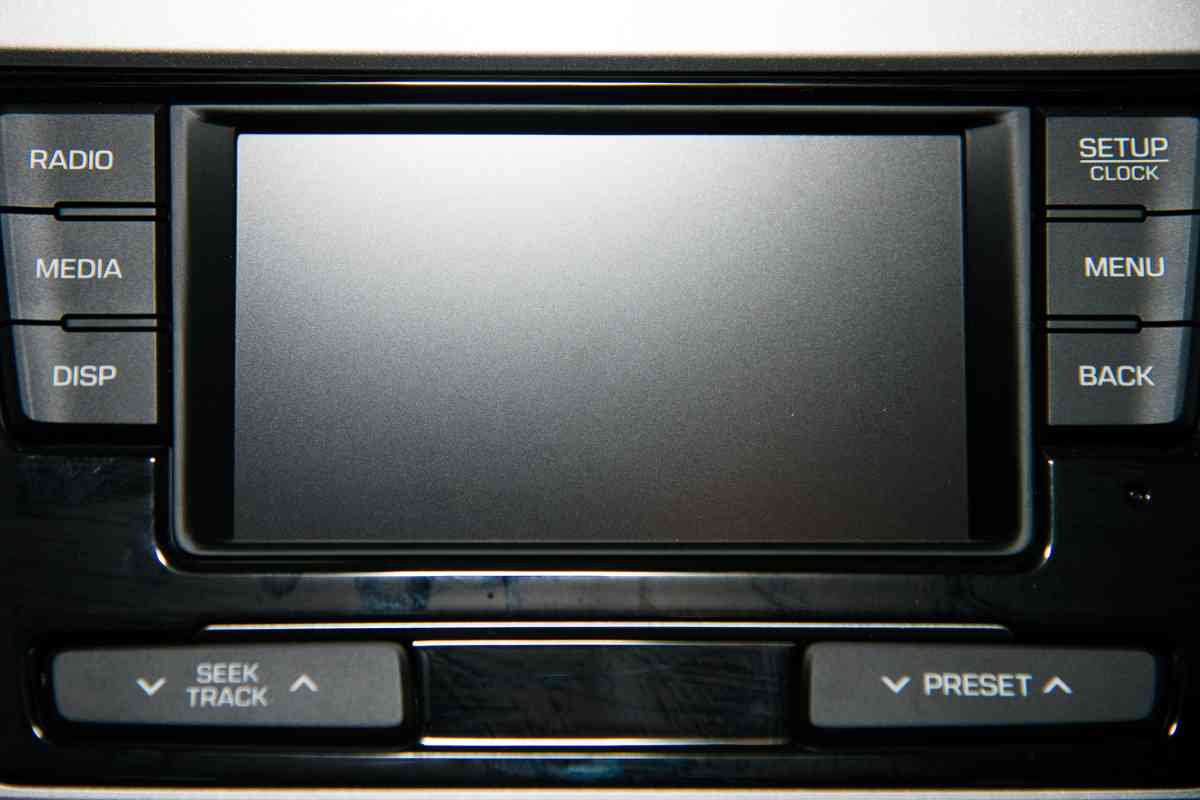When shopping for a car stereo, one of the initial concepts you encounter is “DIN size,” which might be unfamiliar to you. Rest assured, it’s unfamiliar to most people.
If you intend to upgrade your car stereo, it’s crucial to select a head unit that seamlessly fits into the current slot of your car stereo.
Consequently, knowing the size of your head unit becomes essential to facilitate the replacement process.
DIN size denotes the dimensions of the stereo’s chassis, and car stereos are available in two standardized sizes. Single-DIN categorizes stereos by a vertical measurement of two inches and a horizontal extent of seven inches.
In contrast, Double-DIN classifies stereos distinguished by a sheer magnitude of four inches and an equivalent horizontal dimension of seven inches.
This post describes, in detail, the head unit Sizes, which are the single DIN & double DIN radio dimensions.
What Is The Meaning Of DIN?
DIN, derived from the acronym of Deutsches Institut für Normung, represents a renowned German standardization body responsible for establishing a universally accepted size rating for car stereos utilized in automobiles.
Consequently, all car head units conform to the Single Din or Double Din dimensions, depending on the particular model being pursued.
Therefore, whenever you encounter a Din size rating, it indicates the size specifications of the car stereo chassis offered by your vehicle or the prospective head unit under consideration.
Single DIN Dimensions

Commencing with the smaller size, a Single Din car head unit stands at a modest height of two inches and spans a length of 7 inches, rendering it a compact and space-efficient choice.
This particular configuration finds excellent suitability in older and entry-level vehicles, as they often possess limited space provisions designed to accommodate the more compact Single Din car stereo effortlessly.
Examining the Pros and Cons of Single Din
Before settling on the optimal car head unit size for your car stereo, it is crucial to assess the associated merits and drawbacks, which are presented as follows:
Pros
1. Compact Convenience
The smaller size of a Single Din unit allows for easy installation, ensuring remarkable compatibility with a wide array of car dashboards.
2. Cost-effective Affordability
Single Din car head units, characterized by their modest display size resulting from their smaller dimensions, offer a more budget-friendly option for consumers.
3. Accessible Control Unit
Some Single Din car stereo units facilitate the effortless removal of the front control unit, simplifying maintenance tasks and providing added convenience.
Cons
1. Display Limitations
Due to their compact form factor, Single Din units offer limited space for larger displays, particularly when considering including multiple controls.
This can pose challenges for those desiring a touchscreen display in their car head unit.
2. Amplifier Constraints
Without external amplifiers, the built-in amplifiers of Single Din car head units may possess little power, as expected, considering their compact size and form factor.
Double DIN Dimensions

Directing our attention toward the more expansive Double Din size signifies a size twice as large as its Single Din counterpart.
While both variants share the same 7-inch length, a Double Din car head unit distinguishes itself by offering twice the height, measuring a generous 4 inches.
This increased vertical dimension allows for the incorporation of larger displays that typically offer touch input functionality, ensuring a user-friendly experience.
However, it is essential to note that not all vehicles may provide sufficient space to accommodate the installation of a larger Double Din car head unit, as spatial constraints can impose limitations.
Examining the Pros and Cons of Double DIN
Analogous to the Single Din form factor, it is imperative to evaluate the advantages and disadvantages associated with the Double Din form factor, which are delineated as follows:
Pros
1. Great Control and Expansive Display
Opting for the more prominent Double Din form factor greatly benefits by providing abundant control space and a notably larger display. This enables convenient control access, even while on the move.
2. Touchscreen Functionality and Enhanced Display
Double Din car head units typically feature larger displays with touchscreen functionality, making them ideal for operating systems such as Android, which offer a wide array of valuable features. Additionally, the enlarged display facilitates the easy readability of text.
3. Integrated Amplifiers
In certain instances, larger Double Din head units may incorporate built-in amplifiers, resulting in improved audio quality without needing a separate car amplifier.
Cons
1. Space Limitations
The larger size of Double Din units necessitates ample installation space, which may pose challenges in vehicles with limited dashboard real estate or incompatible dimensions.
2. Cost Considerations
The enhanced features and more prominent displays of Double Din units often result in higher price points than their Single Din counterparts. This aspect should be taken into account while considering budget constraints.
3. Installation Complexity
Double Din units’ more prominent size and additional features may introduce complexities during installation, requiring professional assistance or advanced do-it-yourself skills.
4. Compatibility Constraints
Not all vehicles are designed to accommodate the more prominent Double Din form factor. It is essential to verify the compatibility of your vehicle’s dashboard space before selecting a Double Din car head unit.
Head Unit Sizes: Single DIN vs. Double DIN Which is Better?
Single Din and Double Din car head units deliver equivalent audio performance since their quality remains independent of their form factor.
Hence, when contemplating their functionality and feature sets, a Double Din car head unit is inclined to offer a more extensive range of features owing to its typically larger displays.
But, a Single Din head unit’s compact nature makes it easier to install in most cars, as some vehicles may lack sufficient space to accommodate a Double Din head unit.
If you have thoroughly examined this comparison between Single Din and Double Din, we eagerly invite you to share your thoughts in the comments section. Additionally, feel free to post any further inquiries you may have.
Head Unit Sizes: Differences Between Single DIN and Double DIN
With a broad understanding of Single Din and Double Din car head units and their respective merits and drawbacks, you might be intrigued to explore their distinctions and how they measure against each other.
In that regard, consider delving into the following key differences between Single Din and Double Din car stereo head units:
Size
The most apparent yet significant contrast lies in their size. As previously mentioned, a Double Din head unit boasts twice the height of a Single Din head unit.
Consequently, it offers a notably larger display and user-friendly controls, ensuring effortless operation. This expanded size also allows for additional features, as discussed below.
Features
When considering the features offered by Single Din and Double Din car head units, both provide similar audio playback capabilities.
In other words, if you employ an external amplifier, the audio quality remains consistent across both types.
Moreover, basic functionalities such as radio, Bluetooth connectivity, USB ports, auxiliary inputs, and other options are available in Single Din and Double Din units.
However, the larger Double Din units excel in functionality, thanks to their spacious touchscreen displays.
Many Double Din units integrate the Android operating system, providing seamless access to applications like Maps, YouTube, Spotify, and more.
Usability
Turning to practicality and usability, both Single Din and Double Din units pair well with amplifiers and other audio devices.
However, a Double Din head unit proves more versatile if you desire features like connecting external cameras or smartphone integration through Apple CarPlay or Android Auto.
It is worth noting that installing a Double Din unit may require additional effort, making it less suitable for older vehicles that need more direct support for larger Double Din units.
Understanding these distinctions between Single Din and Double Din car head units equips you with valuable insights to make an informed choice based on your preferences and vehicle compatibility.
Frequently Asked Questions
How do Single DIN and Double DIN head units differ in size?
Single DIN head units, characterized by compactness, adhere to a standardized size of around two inches in height.
Conversely, Double DIN head units boast double the height, measuring approximately four inches, offering a more expansive and visually captivating display.
Can a Double DIN head unit replace a Single DIN head unit?
Typically, replacing a Single DIN head unit with a Double DIN unit necessitates modifications to the vehicle’s dashboard.
Given the larger size of Double DIN units, it is essential to ensure compatibility with the available space in your vehicle before considering such an upgrade.
Do Single DIN and Double DIN head units provide the same audio quality?
Indeed, both Single DIN and Double DIN head units deliver comparable audio quality.
The audio performance primarily relies on the amplifier and other audio components rather than the physical size of the head unit.
Which head unit size offers more features and functionality?
Double DIN head units often surpass Single DIN units regarding features and functionality.
The increased display area offered by Double DIN units allows for enhanced features, touchscreen interfaces, and the integration of operating systems like Android, facilitating seamless access to a wide array of applications.
Are Single DIN head units more compatible with older vehicles?
Single DIN head units are more compatible with older vehicles due to their compact size.
In contrast, older vehicles may lack the necessary dashboard space to directly accommodate larger Double DIN units, making Single DIN units more suitable for retrofitting.
Related:

